A Successful Lime Plantation in Nicaragua’s Drylands
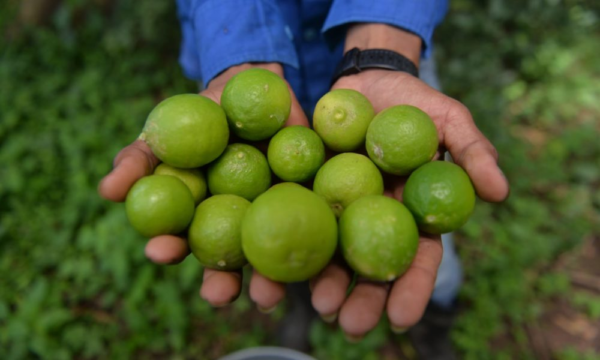
During the rainy season, Raul Barberena’s citrus plantation by the Pacific Ocean in Carazo, Nicaragua, has the potential to yield up to 150,000 native limes a week. This is his story
HAVANA TIMES – Less than two kilometers from the ocean, in an adverse climate, a producer from Carazo department in Nicaragua is mastering the production of citrus in the country. He currently harvests some 70,000 native limes a week, to be sold in the national markets.
Citrus fruits generally grow best in warm, but not torrid, climates. However, Raul Barbarena, an industrial engineer, has managed to get around that rule. His farm, El Limonal, located in the hot and arid community of Tupilapa, has become known for its outstanding production, and Barbarena has been recognized for his excellent, environmentally-friendly methods, amid the 3,359 citrus producers in the Central American region.
“This is a family business. We want to produce in the most environmentally friendly way possible and create a positive impact in the community. We saw an opportunity for development in citrus production, and this project has changed my life. Not only mine, but also that of those working with us, because there’s more employment and more economic activity in the zone,” he explained.
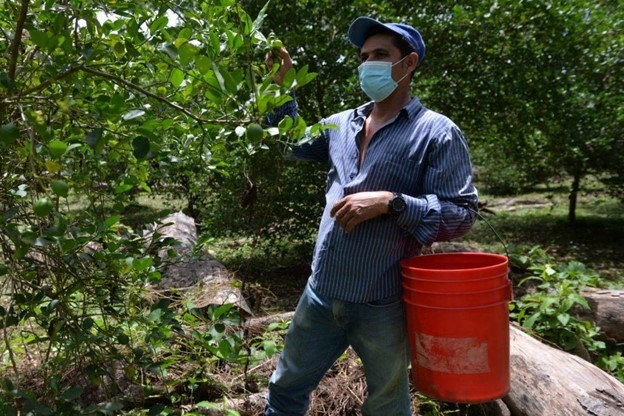
In conversations with La Prensa, Raul Barbarena explained that his father began the citrus production project 50 years ago. “Sometime later, we approached Walmart. That relationship has opened possibilities for a more stable market, and an opportunity to invest and grow.”
Part of his vision has been to generate employment in the community. Currently, he maintains twenty permanent workers, and hires 15 others during harvest time.
“We want to consolidate what we have now and become as technified as we can, in addition to renewing the plantation. We can’t grow as much as we wish because the water resources are limited, and also because we’d have to look for additional marketing possibilities,” Barbarena stated.
In terms of marketing, he indicated: “We can’t produce too many limes, because right now for example, during the rainy season, everybody is harvesting limes, so we can only sell at a low price. The other part we give away. During the pandemic, we gave limes away to the hospitals, the old age homes, the schools,” he recalled.
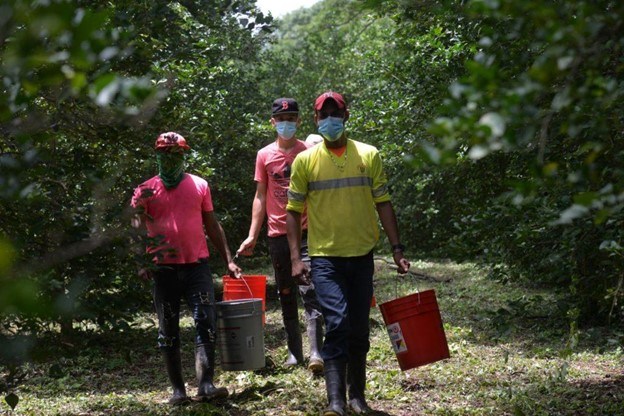
Barbarena has been supplying Walmart Nicaragua since 2017, when he began delivering 1,000 boxes of limes; last year he increased his sales 370 percent.
Challenges in lime production
Since he’s close to the ocean and in a relatively arid area, the producer and his collaborators have implemented a series of actions to guarantee that their harvests will continue increasing and help guarantee the supply of limes to the country.
“It’s been a great challenge, because we’re less than two kilometers from the ocean here, at an altitude well under 100 feet. Those are fairly unfavorable conditions for citrus production,” Barbarena affirmed.
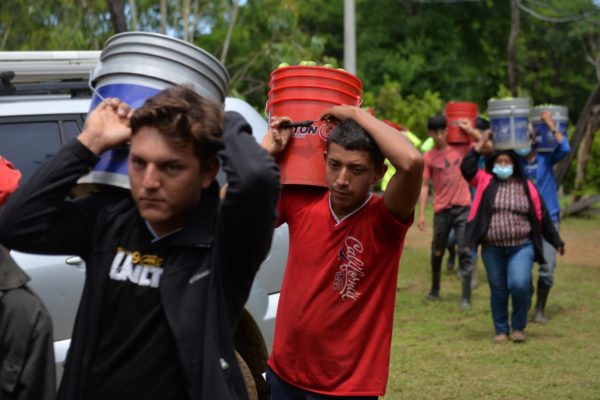
How did he manage it then? In the beginning, the producer explained, since the farm was in a “very dry zone, we had to do a geologic study to guarantee that there’d be water and give us an idea what potential we had.”
Specifically, they’ve managed to take advantage of a microclimate on the farm to be able to produce limes during seasons when other places don’t have any – for example, during the dry season.
“We decided to use practices that are environmentally friendly, and also friendly to the community. First, we don’t use pesticides to avoid contaminating the underground waters. Second, we maintain the surrounding woodlands and manage the shade, because this is a very hot and dry place,” he specified.
Along that line: “We’ve also reforested around the plantation to conserve the humidity and the microclimate that we’ve managed to develop, which allows us to produce limes throughout the year,” Barbarena explained.
Plans to increase the production and export capacity
With the opportunity and secure market that the Walmart arrangement gives us, we’ve been able to invest more deliberately, with an optimistic view of the future. By the next rainy season, we hope to expand our production by 20%. Last year, our sales reached some 4,700 crates of limes; this year we hope to nearly double that quantity,” Barbarena predicted.
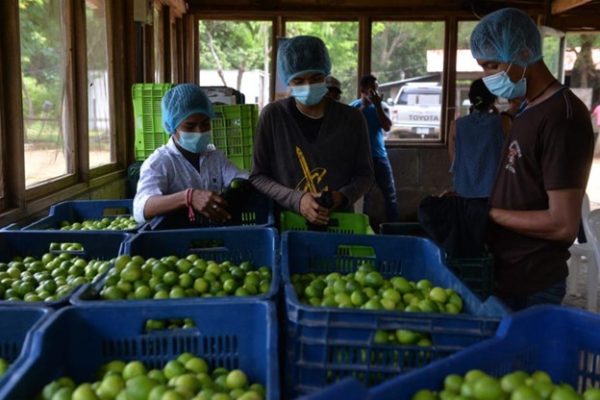
Currently, the farm’s lime grove is relatively young. It’s been in existence for some 6 or 7 years and includes 6,500 native lime trees, 5,500 trees of Tahiti limes, and 100 trees of bitter oranges.
“The native lime gives the best yield here, because the Tahiti variety needs a slightly higher altitude. We’re only some 50 feet above sea level here, so it’s very hot. We grow bitter oranges too, but our future lies in the native lime variety,” the producer emphasized.
During the rainy season, the production of native limes could reach up to 150,000 fruits a week, with great potential for export.
Regarding this point, Barbarena felt that “Walmart represents a window for development. Thanks to the close relationship with them and the support they’ve given us, we’ve succeeded in selling more, offering more employment and generating more wealth. We’re now talking about export, and we want to keep this vision as producers, as entrepreneurs – to look beyond our borders. We can’t only be looking close by.”
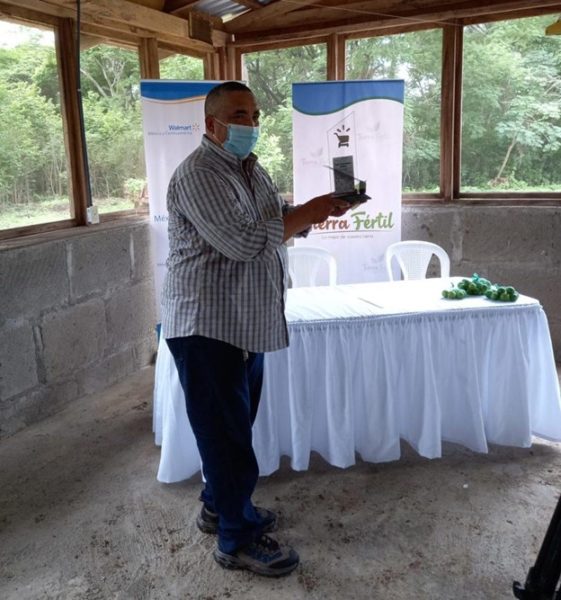
“This property represents a great deal to my family. It’s a project my father began nearly 50 years ago. He had the vision for doing this, since it’s an oasis within an extremely arid zone. All of us here feel very happy about what we’re doing. We’re willing to continue collaborating to maintain the quality and all the characteristics and parameters the market requires,” he declared.
The producer noted that annual production varies. “We’re now above 3 or 4 million limes annually, but when it’s the dry season, there’s so many limes that we can’t find an outlet – we have to explore other ways of exploiting the production, making juice or things like that.”
Richard Lugo, manager of Corporate Affairs for Walmart Nicaragua, indicated they expect “a yield of Tahiti limes between 12,000 and 15,000 units a week. These products are exclusively for supplying the Walmart stores that are under different logos: Pali, Maxipali, the Uniones and 2 Walmart stores we have in Nicaragua.”
Award for Excellence 2021
Barbarena was chosen as one of the best small or medium agricultural producers in Central America in 2021. Walmart awarded him one of the twelve medals for “Supplier of Excellence” with which they annually recognize leadership in each sector. In this case, he was recognized in the category of the “Fertile Land Program”.
“Raul is Walmart Nicaragua’s largest citrus supplier. Last year, he represented 70 percent of the lime supplies for our stores. It gives us pride to have a producer like him in our company, determined and committed to productive excellence and to sustainability. With Raul Barbarena, Nicaragua managed for the second consecutive year to win this award and to stand out on a regional level,” Lugo stated.

He also noted that Walmart awards the prize once yearly to just twelve people in the entire Central American region. “Of the 3,300 [producers who supply the company] twelve are chosen from among the entire Central American operation, not just Nicaragua,” he underlined.
The annual “Supplier of Excellence” award is a long-standing business practice in Walmart’s 27 global operations.
Juan Zuniga, manager of Nicaraguan produce for Walmart Nicaragua added: “We feel very proud (…) Being recognized for the second consecutive year from among 3,300 suppliers in Central America means that we’re doing something different. We publicly recognize Raul for his love, passion and for the legacy of his father that he’s following, as well as for his Fertile Land project.”
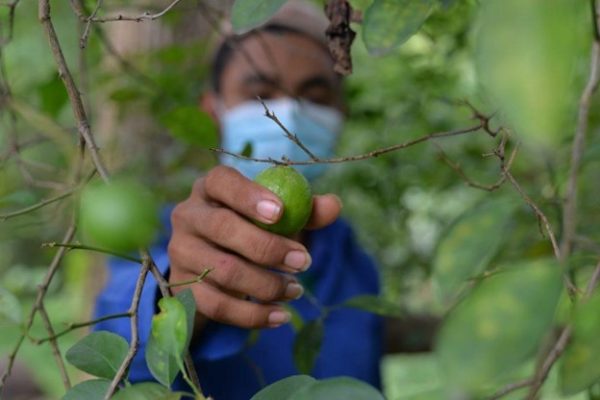
Barbarena has distinguished himself as a star producer despite being in a zone where high temperatures are common. “Producing in these zones is a challenge,” Richard Lugo recognized.
“[Barbarena] told us how he’s maintained the watersheds, how he’s worked to maintain the old-growth forests. During times of drought, he tries to maintain a stable wildlife, he even brings them food when it’s very dry. Simply by maintaining the old growth woodlands, they’ve managed to keep the area shaded and they’ve reforested around the groves. Added to this is the fact that he doesn’t use pesticides; that everything he uses for fertilizer is organic, and in that way, he avoids contaminating the groundwater,” Lugo added.
Environmentally friendly producer
The planted area of the farm is just under 70 acres. Barbarena uses a drip irrigation system for the plants; as mentioned, he doesn’t use pesticides.

“We currently have 40 manzanas [69.6 acres] planted. Our goal is to have more, but we have to be careful about water, because we’re very near the ocean. If we overexploit the hydrological resources, they could become polluted with seawater, and we could lose everything,” Barbarena emphasized.
He also explained how they’ve tried to maintain the old-growth forest and the shade. “It’s extremely hot, so for us it’s good business to be environmentally friendly. In addition, to conserving water we’ve reforested around the area, planting over 10,000 trees to help maintain the harvest. We irrigate in the dry season, and at that time we conserve water as much as we can. We also try to make organic fertilizers and maintain everything as healthy as possible.”
“We try to produce organically, although at times it’s hard and we have to use some chemicals. However, we try to be as friendly as possible towards the environment. Right now, all of the citrus trees are being attacked by diseases. The Yellow Dragon plague has ravaged citrus groves around the world, but we’ve succeeded through management of the fertilizer and shade control to contain that plant disease, which is capable of rapidly drying up a tree,” he concluded.




